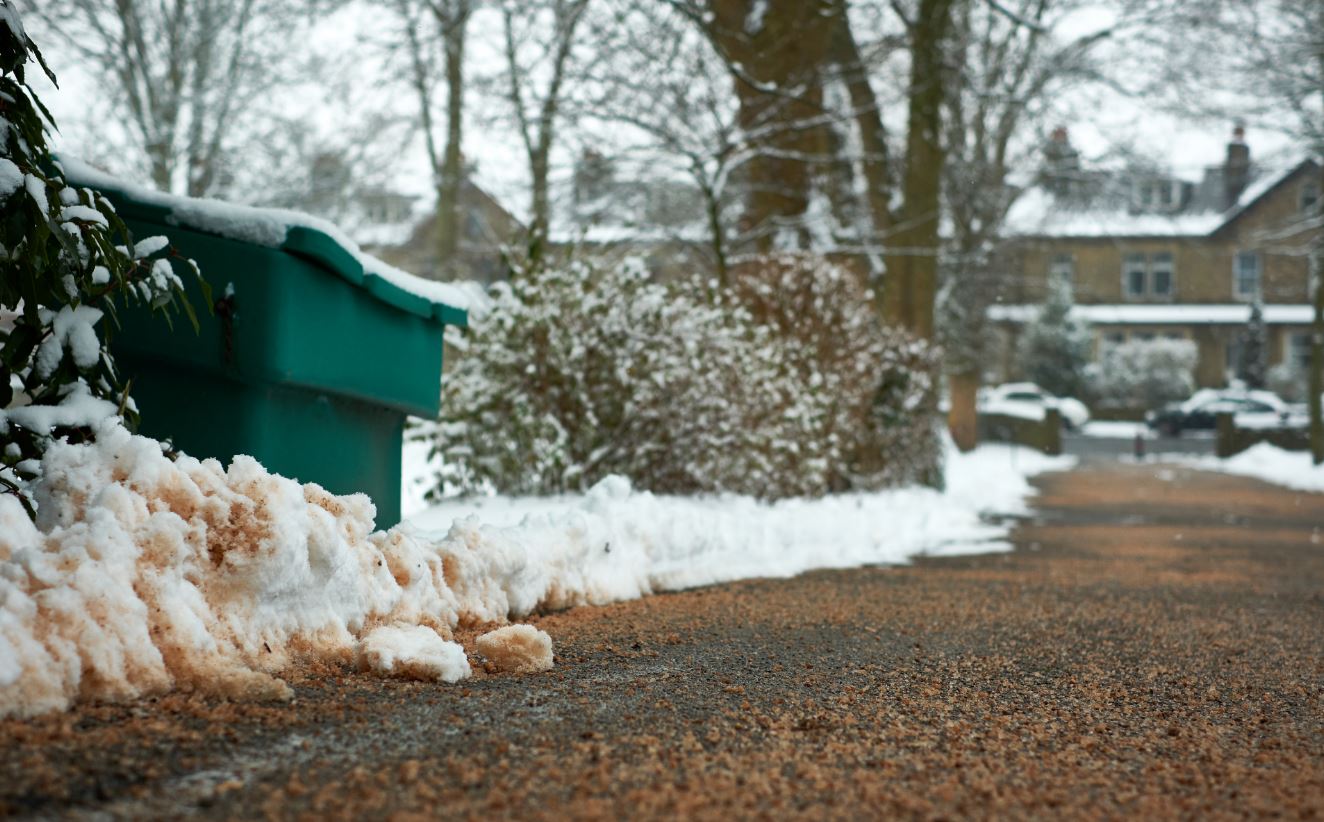
EcoGrit Ice Melt | Safe for Children and Pets, Any Surface | Non-Toxic Light-Weight Easy Application | Protects from Snow and Ice for up to a week.
EcoGrit provides a fantastic ice melt that is environment-friendly and pet-friendly
Wintertime brings about many challenges for people trying to go about their daily lives, not least of which is coping with slippery ice on driveways, pavements and roads. Falls from slipping or sliding over on black ice, hardened snow and frost account for a high proportion of the injuries seen by hospital A&E departments in the colder months and the repercussions from these can last for a lot longer than one season.

Additionally, cycling and driving is more dangerous to do on an icy road due to the lack of traction and longer time needed to brake safely. Collisions between cars etc. are more likely to occur if one or more driver starts to lose control of their vehicle. A quick and easy way to reduce the risk and clear away dangerous snow, frost or ice is to spread grit of some form or another onto the road to add traction and help melt the ice so that it turns back into a liquid and runs safely off the surface into the gutters. However, all grit is not the same, and some types are more suitable to use than others.
Traditionally, grit used to clear the road is made largely of rock salt. The salt lowers the freezing temperature of the moisture in the ice, causing it to melt away. It breaks down the molecules and makes it harder for the ice to remain frozen. Salting icy roads in this way is effective, right down to temperatures of -26.6 degrees C; however, as already mentioned, it also causes problems due to its corrosive toxicity and effect on the surrounding environment. It is also not safe to eat, so causes additional harm to pets who get it on their paws and lick them to remove it.
Using the correct terminology from science, rock salt is made of the chemical sodium chloride, which can cause painful salt burns to humans and animals alike if handled too much or incorrectly. It can also be harmful when inhaled, so wearing a mask when applying it is vital.
Rock salt can also harm roads, pavements and driveways, infiltrating porous materials such as concrete and asphalt and lowering their pH level, making it less stable and more prone to cracks, surface spalling and fissures from passing traffic. In turn, these cracks pose a risk to the vehicles themselves and increase the probability of punctures and tears to the tyres and corrosion to the underside of cars, lorries and vans.
Rock salt can stay on pavements and roads for a long time, spreading onto vehicles and people for several days before eventually running off in water from the melted ice or winter rainfall. This is why it is capable of causing such widespread problems.
Once it is diluted in the run-off water or rain puddles, it stays around in liquid form for longer, seeping into the soil, flowing into water sources and clinging to the underside of vehicles and the soles of people’s shoes and animals’ paws. Just one application of rock salt can stay in the local area in one form or another for days, if not weeks.
While road grit consisting mainly or wholly of rock salt can be effective as a deicer, it can cause significant harm to the environment, threatening habitats nearby, such as lakes and rivers, domestic gardens and hedgerows. This is due to the salt getting into water sources, injuring local wildlife and altering the chemistry of the ecosystems affected.
From causing fish, water fowl and other lake and pond life to become sick to leading to plants to defoliate, rock salt affects the environment at multiple levels. Plants absorb the rock salt instead of the crucial minerals they need to survive, which causes mineral deficiencies and makes it harder for the roots to draw up the water from the soil the plant needs to survive.
The good news is that there are viable alternatives for deicing and gritting the roads in colder temperatures that do not result in such harmful repercussions. Using an organically derived grit compound that does not contain rock salt will give all the benefits of a powerful deicer safely and easily. EcoGrit Concentrate fits the bill perfectly, with its corrosive ingredients and pet-friendly formula
Carrying EcoGrit with you in your vehicle offers valuable peace of mind that you have to worry about sliding and causing an accident, or having to abandon your car mid-journey. EcoGrit will help get you home and out of the adverse winter weather without harming passers-by, pets, the local wildlife or your own vehicle and belongings.
We have all seen the huge grittering machines doing their work on frosty roads, and being able to apply grit as quickly as possible really helps keep surfaces safe and traffic flowing smoothly during colder spells. You can apply grit at any stage, but getting it down sooner will generally reap more effective results. Grit can stay on the surface for several days; however, as traffic passes over it, it can be worn away or carried off in melted ice, so regular reapplication is wise.
EcoGrit works on icy surfaces for up to seven days in temperatures down to -20 degrees C. You can even apply it before ice forms to help alleviate problems before they arrive – just keep an eye on the forecast to be well prepared this winter.
When roads freeze over, they can become covered by a thin layer of smooth ice that is practically invisible to the human eye. This is known as black ice and is more dangerous than coatings of frost or snow, due to its lack of visibility. Vehicles and pedestrians alike can be caught unawares by black ice, especially in areas where it is patchy and so more unpredictable. It is best to stay calm when faced with black ice. Slow down, stay vigilant and keep the vehicle as straight as you can until you can regain traction. If you are walking, try to hold on to a rail or similar to help yourself stay upright and wear suitable shoes or boots with a good, grippy sole so you don’t slip over too easily.
EcoGrit
20 Harbour View
Truro
Cornwall
TR1 1XJ

EcoGrit provides a fantastic ice melt that is environment-friendly and pet-friendly

With the return of winter and the inevitable widespread use of rock salt gritting, the RSPCA is warning to check pets’ paws and fur if






EcoGrit is an environmentally conscious company that would like to serve the people by offering them education, insight, “peace of mind” and the chance to make a positive difference on a monumental scale at a time when winter weather patterns are becoming more unpredictable.
VAT (Value Added Tax) Number: 340 3662 26
EcoGrit provides a fantastic ice melt that is environment-friendly and pet-friendly
© 2023 EcoGrit Ltd